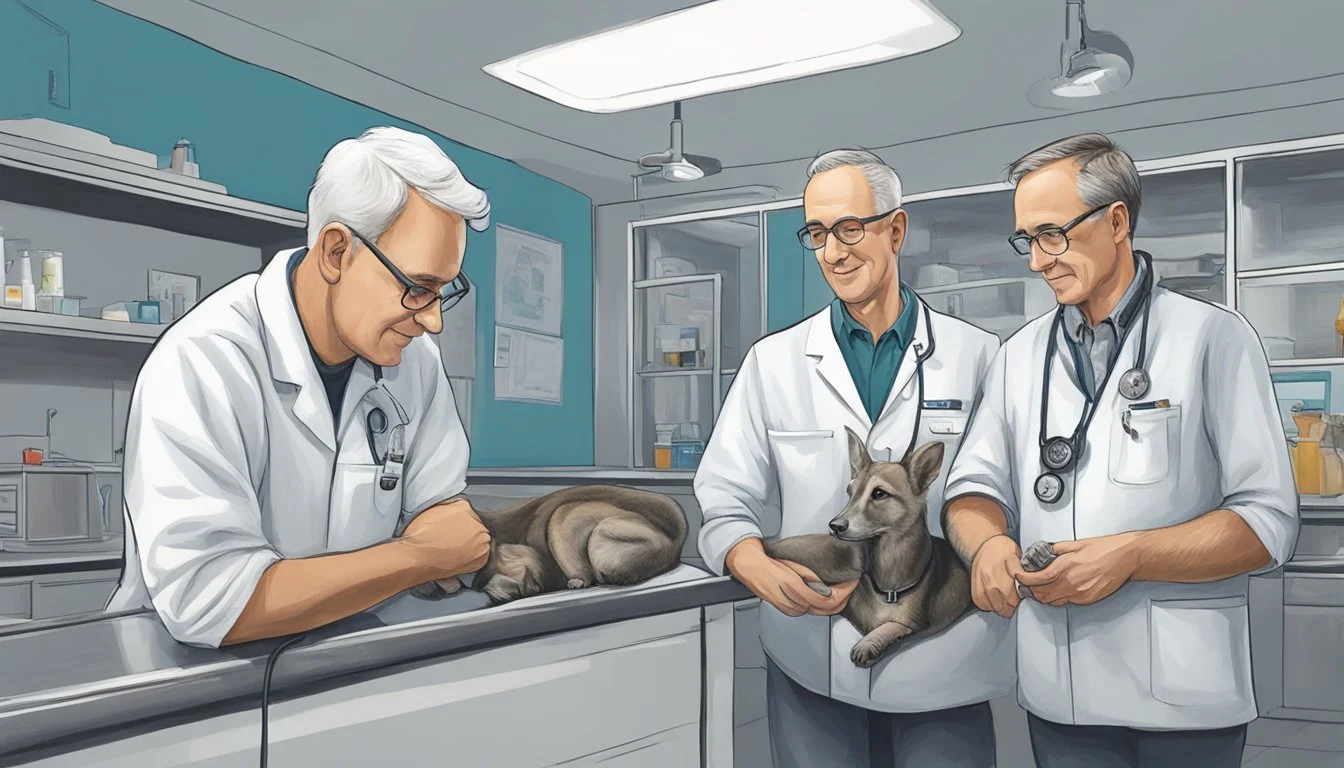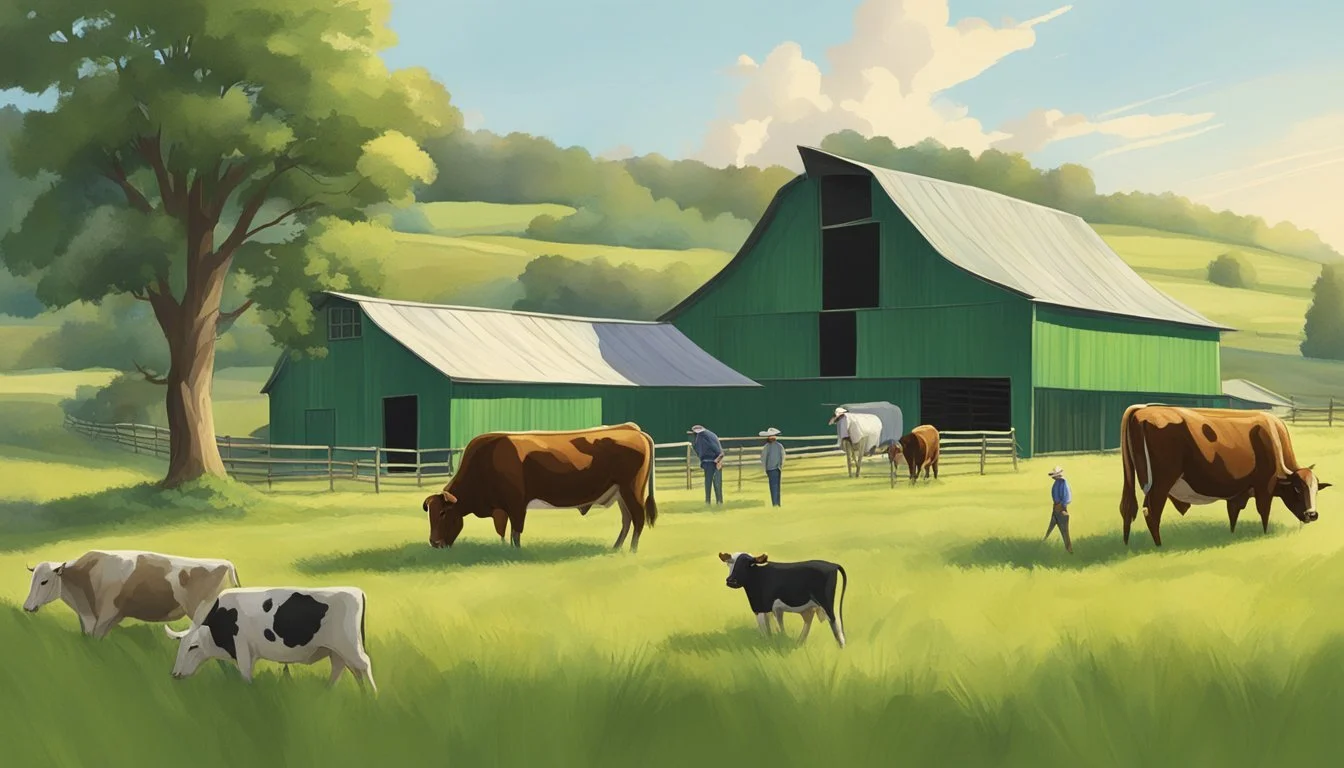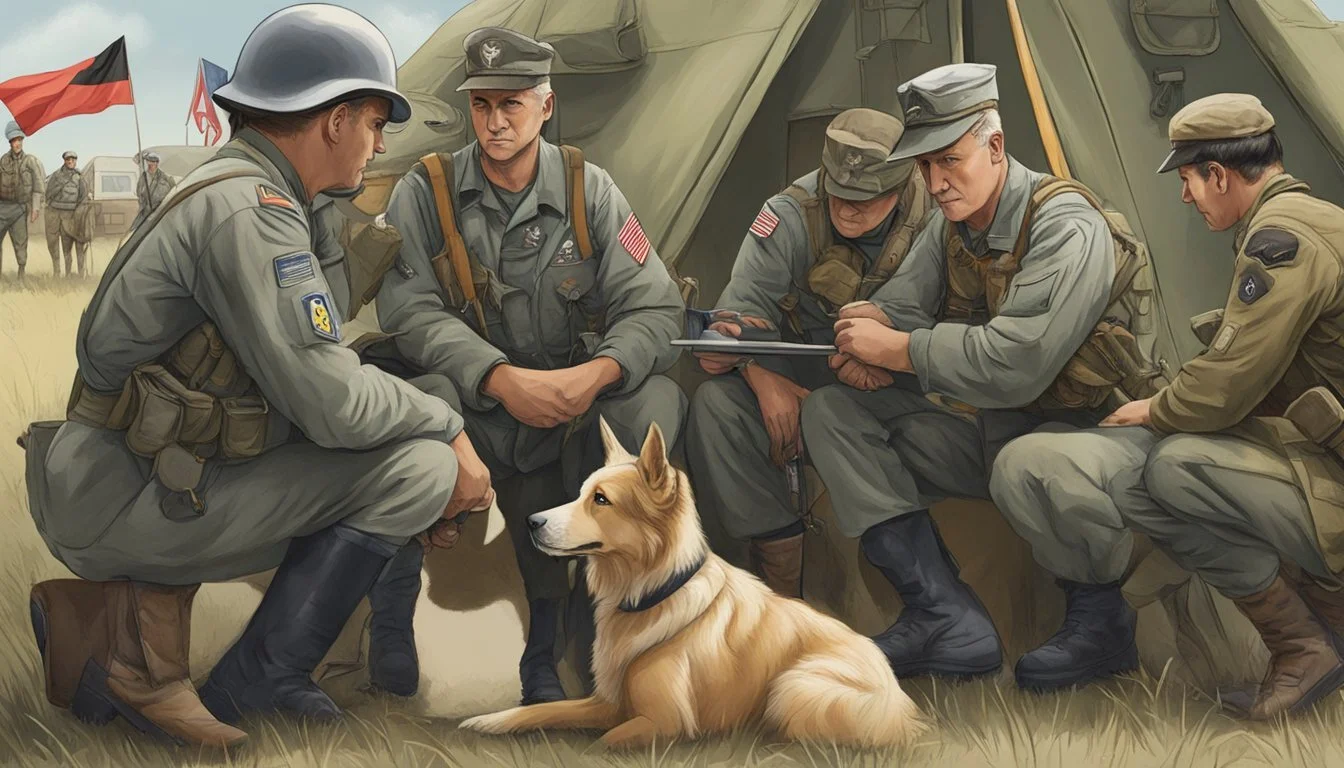German Texan Contributions to Texas Veterinary Medicine
Enduring Legacy and Innovation
German Texans have played a significant role in the development of various sectors in Texas, including veterinary medicine. Since their settlement in Texas in the mid-19th century, they have established a presence in many areas of life and industry. As Texas diversified and expanded, the contributions of its German-descent population became increasingly integral, particularly in the fields of agriculture and animal husbandry, which in turn stimulated advancements in veterinary practices to ensure livestock and working animals remained healthy and productive.
The state of Texas, known for its large ranches and extensive livestock production, demanded robust veterinary services to support its booming agricultural economy. German Texan veterinarians, many of whom brought with them expertise and traditions from Germany, a country long respected for its advances in medical sciences, were instrumental in introducing new veterinary techniques, practices, and knowledge to their new homeland. This fusion of traditional German veterinary skills with the pioneering spirit of Texas cattle ranching helped to lay the foundations for modern veterinary medicine in the region.
Their influence extended beyond providing medical care for animals; German Texans were often active in the political and educational spheres, promoting the importance of animal health and supporting legislation to regulate veterinary practices in Texas. This ensured not only the well-being of the animals but also helped safeguard public health, contributing to the economic stability and well-being of Texan society. Through these efforts, German Texans significantly shaped the evolution of veterinary medicine in Texas, marking an enduring legacy that continues to benefit the state today.
Historical Context of German Texans
The story of German Texans is interwoven with the greater narrative of Texas's settlement and cultural development, particularly in Central Texas areas like Fredericksburg and New Braunfels.
Early Migration and Settlements
German migrants began settling in Texas during the 1830s. The Adelsverein, also known as the Society for the Protection of German Immigrants in Texas, was formed to facilitate the transportation and settlement of German immigrants. Central Texas saw significant establishment of German colonies like Fredericksburg and New Braunfels, with these immigrants keen on starting afresh, away from the political unrest in their homeland.
Major Settlements:
Fredericksburg (Founded 1846)
New Braunfels (Founded 1845)
Significant Figures and Societies
Prominent figures such as Johann Friedrich Ernst, the so-called "Father of German Immigration to Texas," helped establish these communities. Societies like the Adelsverein played crucial roles in supporting German settlers, guiding them in their new environment, and maintaining their unique cultural heritage amidst the emerging Texan context.
Notable Societies:
The Verein zum Schutze Deutscher Einwanderer in Texas (Adelsverein)
German Texan Cultural Impact
German Texans maintained a strong sense of German culture through their customs, language, and faith. This cultural preservation was particularly robust despite facing prejudice during periods of tension, such as the Civil War and World War I, when anti-German sentiment ran high. The influence of German heritage remains palpable in Central Texas through architecture, food, and annual celebrations.
Cultural Contributions:
Architecture: Vernacular buildings with German influences
Annual Celebrations: Oktoberfest in Fredericksburg
Development of Texas Veterinary Medicine
The evolution of Texas veterinary medicine has been significantly influenced by German Texans through foundational efforts, educational progress, and innovative practices.
Foundational Contributions
German Texans played a pivotal role in shaping the veterinary medicine landscape within Texas. One notable figure is Dr. Mark Francis, a graduate of the Ohio State University School of Veterinary Medicine. He significantly contributed to the veterinary field through research and as a faculty member in Texas, implying the German Texan influence on the state's veterinary community early in its development.
Veterinary Education and Institutions
Texas has established a robust network of veterinary educational institutions that serve as pillars for the state's animal health industry. The Texas A&M School of Veterinary Medicine & Biomedical Sciences (VMBS), for instance, represents a century of expansion from its inception in 1916. German Texan contributions have fortified ties within the university system, promoting inter-institutional partnerships. These collaborations are crucial for the diffusion of knowledge and technology across the veterinary community.
Advancements and Innovations
Advances in research and technology have solidified Texas's position as an epicenter of veterinary innovation. Veterinary medicine is integral to connecting human and animal health and encompasses industries from agribusiness to biomedicine. The input from German Texan scholars and professionals has been instrumental in both broadening the scope and enhancing the quality of veterinary services. The state's commitment to integrating cutting-edge technology with veterinary practices has helped maintain a forward-moving industry and college community.
Agriculture and Ranching
The German Texan influence on Texas agriculture and ranching significantly impacted livestock management, equine health, and the development of poultry and pork industries. These advancements have strengthened the state's veterinary practices.
Livestock Management and Care
German Texans introduced advanced livestock management techniques to Texas, incorporating meticulous care and promoting animal health. Practices such as rotational grazing—where livestock are moved between pastures to prevent overgrazing—enhanced the sustainability of ranching in areas like the Texas Hill Country.
Key Improvements:
Introduction of veterinary medicine practices specific to local needs.
Emphasis on preventative care to maintain livestock health.
Horse Breeding and Equine Health
Horse breeding became an esteemed aspect of German Texan contributions, with a focus on nurturing equine health and performance. The introduction of certain horse breeds and breeding practices led to improvements in both the agricultural utility and the competitive edge of Texas horses.
Breed Introduction: Imported sturdy breeds capable of farm work and suited to Texas's climate.
Equine Health: Emphasized regular veterinarian check-ups and vaccinations, impacting overall horse wellness positively.
Poultry and Pork Industries
German Texans were instrumental in establishing the poultry and pork industries, which now play a crucial role in Texas's agriculture and economy. They implemented methods to improve the health and efficiency of poultry and hog farming, subsequently refining veterinary care for these animals.
Innovations:
Pork: Improved pig breeding systems for higher quality meat production.
Poultry: Disease control protocols to safeguard against common illnesses.
Note: The attention to detail and structured farming methods of German Texans have left a lasting imprint on Texas agriculture, directly influencing contemporary veterinary practices and animal husbandry standards.
Public Health and One Health Initiative
The One Health Initiative recognizes that human health is interconnected with the health of animals and the environment. In Texas, German Texans have played a pivotal role in integrating veterinary practice with public and community health efforts, particularly through addressing zoonotic diseases within the San Antonio area.
Zoonotic Diseases and Community Health
Zoonotic diseases, illnesses that can spread between animals and humans, are a significant concern for public health. The community's well-being is influenced by the health of its animals, which can be both pets and livestock. With a focus on San Antonio, veterinary professionals, including German Texans, have implemented strategies to monitor and control these diseases, protecting not only the human population but also the animals with whom they share their environment.
Surveillance: Tracking of wildlife and livestock diseases to provide early warning for communities.
Vaccination Programs: Prevention strategies for both animals and humans to reduce incidence of diseases like rabies.
Education and Outreach: Informing the public about risk factors and prevention methods.
German Texan Contributions to Public Health
German Texans have been instrumental in shaping public health strategies in relation to veterinary medicine in Texas. By advocating for the One Health approach, they ensure that veterinary practices contribute to the overall health of the San Antonio community.
Expertise Sharing: German Texan veterinarians have brought advanced knowledge from Europe, enhancing local practices.
Collaboration: Working with public health officials to create integrated health strategies.
Innovation in Disease Management: Developing new methodologies for the diagnosis, treatment, and prevention of animal-borne diseases.
Their efforts have not only improved animal health within the region but have also mitigated risks to human health, establishing a cooperative front against disease and health challenges.
Preservation of German Texan Heritage
Preservation efforts play a pivotal role in maintaining the German Texan heritage, focusing on cultural practices, material culture, and distinctive architecture that German immigrants brought to Texas.
Maintaining German Cultural Practices
Organizations dedicated to preserving German Texan heritage actively document and promote traditional German cultural practices. They record and teach the German language, maintain folk arts, and celebrate customs through festivals and events that bring together descendants and enthusiasts.
Language: Efforts include German language workshops and courses that help preserve the linguistic heritage.
Folk Arts: Traditional crafts, music, and dance are practiced within the community.
Festivals: Annual events such as Oktoberfest are held to celebrate and share German Texan culture with the wider public.
German Texan Material Culture
The material culture of German Texans is preserved through the curation of artifacts, documents, and family records that illustrate the life and contributions of German immigrants to Texan society.
Artifacts: Items ranging from tools to clothing are collected and exhibited.
Documents & Records: Archiving family histories, immigration records, and personal correspondences maintain a narrative of the German Texan experience.
Architecture and Settlement Patterns
The architecture and settlement patterns of German Texans reflect a unique blend of German and Texan influences, characterized by enduring constructions that have been meticulously preserved.
Houses: Distinctive German Texan homes, often with stone construction, gabled roofs, and timber framing.
Architecture: Public buildings such as schools and churches stand as records of German Texan presence and ingenuity.
Settlements: Towns established by German settlers retain their original layout and heritage through preservation efforts.
Preservation of these elements contributes to the enduring legacy of German influence in Texas, ensuring that the history and contributions of German Texans remain an integral part of the state's rich tapestry.
Influence on Texan Society and Industry
The German settlers in Texas brought with them a wealth of cultural practices that translated into notable economic and industrial contributions, including trade relations, media, and food industry enhancements, particularly within cities such as Galveston and Austin.
Economic and Trade Relations
German influence in Texas significantly bolstered the state's economic and trade relations. Galveston emerged as a vital trade hub for German immigrants, shaping it into one of the most prosperous ports in Texas. They facilitated trade between Texas and Germany, bringing over goods ranging from farming equipment to luxury items, thereby diversifying the Texan market and connecting it more robustly to international trade networks.
Key Industries:
Farming Equipment Supply
Luxury Goods Import
Trade Route Establishment
The Role of German Newspapers
German Texans founded a range of newspapers, which played a critical role in the assimilation and education of the immigrant population. These publications, often in German, served not only to keep the community informed of local and international news but also acted as platforms for promoting trade and industry. The newspapers furthered communication among German-speaking citizens and were integral in maintaining German culture within Texan society.
Notable Publications:
Neues Braunfelser Zeitung
Texas Deutsche Zeitung
Food Industry and German Cuisine
German cuisine (What Wine Pairs Perfectly With German Cuisine) left a lasting mark on the Texas food industry. German Texans introduced culinary techniques and sausage varieties, including the famous Texas bratwurst and schnitzel, that became staples within the state. Moreover, they established breweries which significantly influenced the regional beer industry. Their contributions to Texas's culinary scene reflect a blend of German and Texan tastes that continue to thrive in cities such as Austin, where German food festivals celebrate this fusion.
German Culinary Contributions:
Sausages & Meat Products: Texas bratwurst, schnitzel
Brewing: Introduction of German beer-making techniques
Military Service and Contributions
German Texans played pivotal roles in the advancement of veterinary medicine within military contexts, particularly during the Civil War and World War I. Their expertise was instrumental in the care and management of military animals, contributing to the broader development of veterinary services in the military.
Civil War and World War I Involvement
During the Civil War, German Texans made significant contributions, providing veterinary care to the cavalry and artillery units' horses, which were critical to transportation and combat strategy. Their deep understanding of equine care not only enhanced military efficiency but also set foundational practices in veterinary medicine.
In World War I, they continued this tradition. The involvement of German Texan veterinarians became more formalized as the U.S. military recognized the importance of maintaining the health and welfare of thousands of animals, especially horses and mules. These animals were indispensable for transport, logistical support, and in some cases, direct combat roles.
Military Veterinary Services
Establishment of Veterinary Corps:
War Action Civil War Informal veterinary care by German Texans World War I Formation of official veterinary units
The legacy of German Texans is notable in the establishment of formal veterinary services within the military. By World War I, the military saw the need to create official veterinary units, partly thanks to the practices set by German Texans during earlier conflicts.
Advancements in Veterinary Medicine:
Adaptation of civilian veterinary techniques to military needs.
Improved surgical methods tailored to battlefield conditions.
German Texan veterinarians were instrumental in adapting civilian veterinary practices to suit military requirements, enhancing both the treatment efficacy and recovery rates of injured animals. Their dedication to veterinary science during military service left an indelible mark on the profession, elevating the standards of care within both military and civilian spheres.









